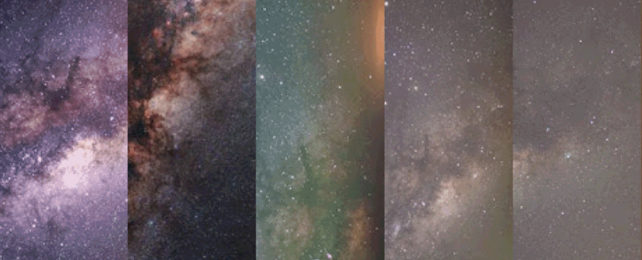If you were to look up at the night sky, it could range from a dusty glow to an inky black expanse with thousands of sparkling stars, depending on where you are.
On a clear night, estimates suggest a couple thousand stars are visible to the naked eye, but the light pollution glare of city and small town lights prevent us from getting a view of the cosmos in all its glory.
In order to describe how much light pollution a particular location has, astronomers use the Bortle Scale, which ranks visibility from levels one to nine. John Bortle first described it in a 2001 edition of Sky & Telescope, an astronomy magazine.
Each level classifies the night sky based on their cosmic views. You can find the Bortle Scale level for your night sky using the interactive map tool at lightpollutionmap.info.
These images show how many more stars you can see in truly dark skies, outside of cities, suburbs, and other human light sources:
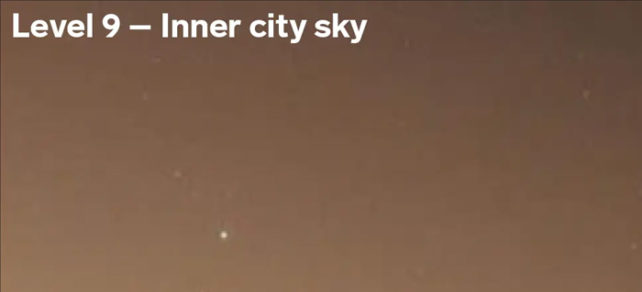
What's observable: the Moon, nearest planets, and a handful of the brightest stars
Where to find it in the US: New York City, Las Vegas, Los Angeles
A sky with extremely bright light pollution, which is mostly found over major cities, glows orange-ish. While it might not be as potentially harmful as other kinds of pollution, light pollution can affect human health.
Multiple studies have indicated that exposure to light at night can disrupt the body's biological clock, which is linked to health complications, including obesity, depression, and sleep disorders.
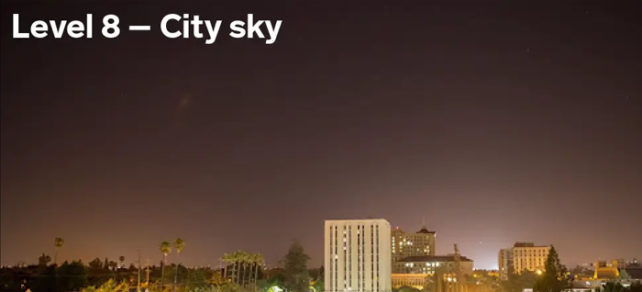
What's observable: Constellations may be slightly visible
Where to find it in the US: Boston, Massachusetts; Austin, Texas; Indianapolis, Indiana
At level eight, the sky can be so bright from light pollution that you could read by it. With the naked eye, most stars and even constellations will be invisible.
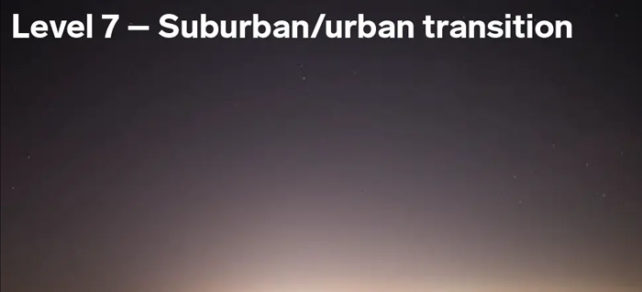
What's observable: star cluster M44 and the Andromeda Galaxy are very indistinct, and the Milky Way is totally invisible or nearly so
Where to find it in the US: Seattle, Washington; Savannah, Georgia; Salt Lake City, Utah
The light pollution in these areas makes the entire sky appear light grey in color, and the Milky Way is effectively invisible.
A 2016 study estimated that even on the clearest night, one third of humanity can't see the Milky Way.
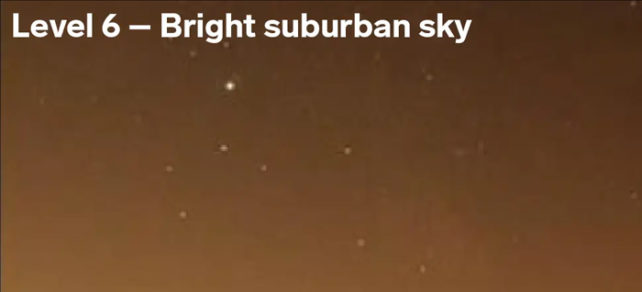
What's observable: the Andromeda Galaxy is only faintly apparent
Where to find it in the US: Albuquerque, New Mexico; Lincoln, Nebraska; Bloomington, Indiana
At level six, clouds appear fairly bright and the sky glows a grayish white. Light pollution under these conditions is very bright.
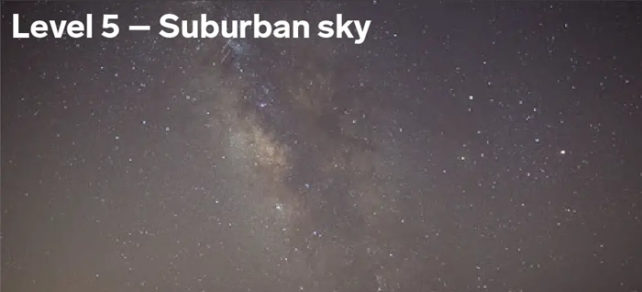
What's observable: the Milky Way Galaxy can look washed out
Where to find it in the US: Burlington, Vermont; Santa Fe, New Mexico; Grand Junction, Colorado
Most of us spend our lives in this Bortle Scale level or above, according to telescope store OPT Telescopes.
At level five, light pollution will be visible in most, if not all, directions. Clouds are brighter than the sky itself, and the Milky Way is faint.
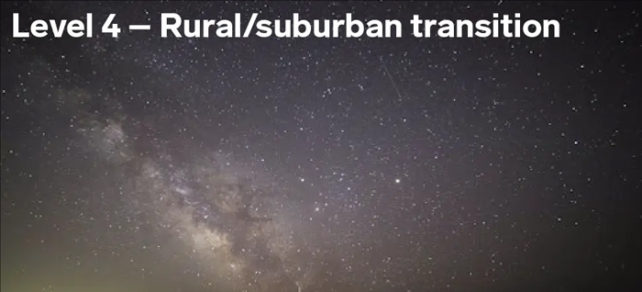
What's observable: the Milky Way, the Triangulum Galaxy
Where to find it in the US: Twin Falls, Idaho; Flagstaff, Arizona; Wind River Indian Reservation, Wyoming
Light pollution is visible in several directions. Under these skies, the sky background begins to appear gray instead of black.
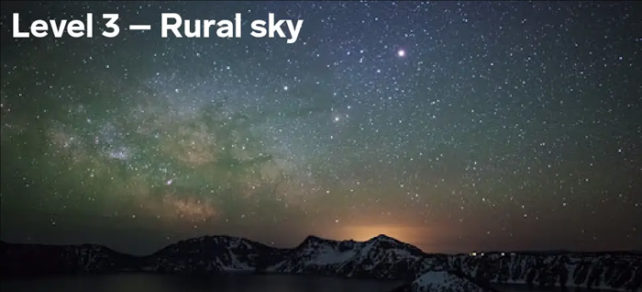
What's observable: the Milky Way Galaxy, and densely packed collections of stars such as M4, M5, M15, and M22
Where to find it in the US: Yosemite National Park, California; Everglades National Park, Florida; Great Smoky Mountains National Park, Tennessee
You can see the Milky Way, but the fine detail is gone. Some clouds are illuminated in the direction of light sources, but overhead clouds remain dark.
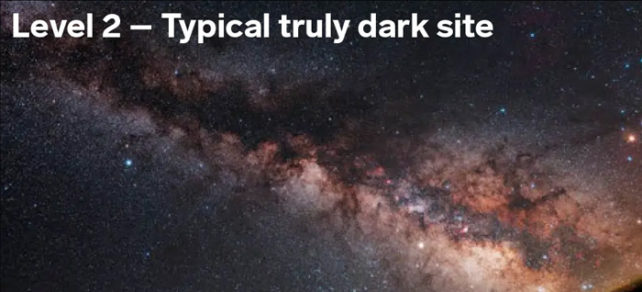
What's observable: the Milky Way Galaxy, the Magellanic Clouds
Where to find it in the US: Cherry Springs State Park, Pennsylvania; Adirondack Park, New York; Joshua Tree National Park, California
The Milky Way is highly visible to the naked human eye. Sky glow, a haze of light from scattered light sources on the ground, may be weakly apparent along the horizon.
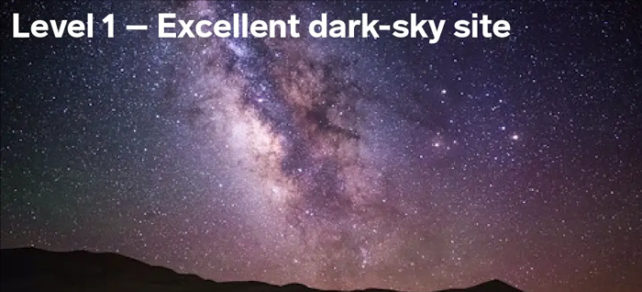
What's observable: the Milky Way Galaxy, the Andromeda Galaxy, the Orion Nebula
Where to find it in the US: Big Bend National Park, Texas; Grand Canyon National Park, Arizona; Denali National Park, Alaska
Level One skies provide an unimpeded view of the cosmos, comparable to those Galileo saw. The night sky is brimming with stars, making it harder to parse out faint constellations. The Milky Way is so bright that it's capable of casting shadows.
This article was originally published by Business Insider.
More from Business Insider: